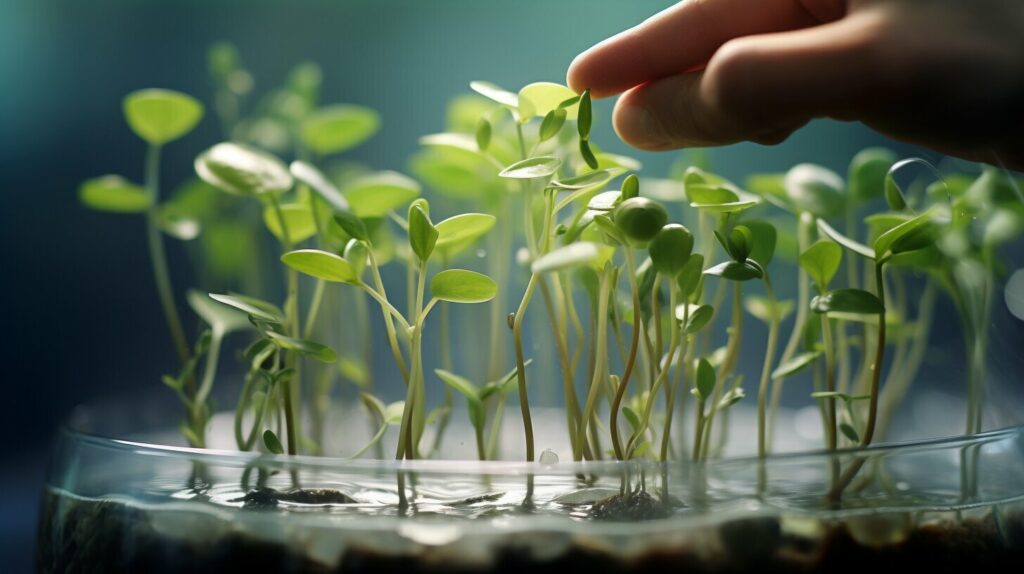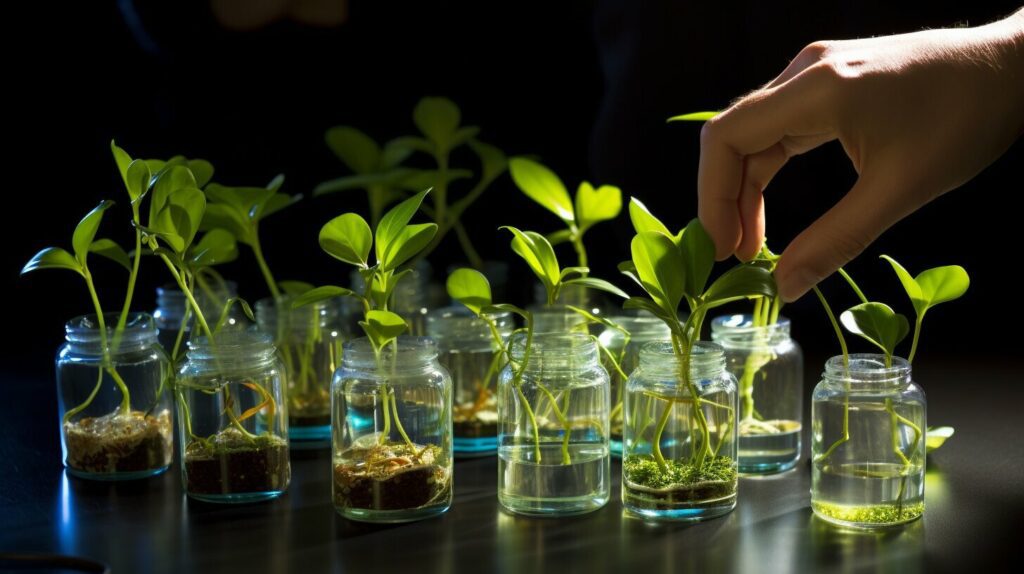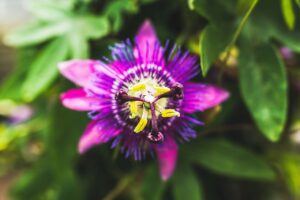Are Plants Asexual, I am excited to delve into the fascinating world of plant reproduction. One intriguing question that has captured the attention of many is whether plants can reproduce asexually. By understanding the mechanisms behind plant reproduction and the methods of propagation, we can better appreciate the complexity of the plant kingdom.
- Plant reproduction is a complex and fascinating process
- The question of whether plants can reproduce asexually is a topic of interest
- Understanding the mechanisms behind plant reproduction is crucial to determining if plants are asexual
- There are both sexual and asexual methods of plant reproduction
- Exploring the advantages and disadvantages of asexual reproduction in plants can shed light on their remarkable adaptability
Understanding Plant Reproduction
Plant reproduction is a fascinating and complex process that involves various mechanisms and strategies. As a copywriting journalist, I find it intriguing to explore the different ways plants propagate, both sexually and asexually. Understanding the fundamentals of plant reproduction is crucial in determining if plants can reproduce asexually.
Plants can reproduce through different means such as spores, seeds, cuttings, and grafting, among other methods. Sexual reproduction involves the fusion of gametes from two different parents, resulting in offspring with genetic variations. Asexual reproduction, on the other hand, does not involve genetic recombination and produces genetically identical offspring.
Plant reproduction is a complex and dynamic process that enables plants to survive and adapt to diverse environments. Whether reproducing sexually or asexually, plants have evolved impressive strategies for ensuring their propagation and survival.

Plants are incredibly adaptable and have evolved to reproduce through both sexual and asexual means. Asexual plant propagation is the process of producing offspring without involving seeds or genetic variety. Two methods of asexual plant propagation are cloning and vegetative reproduction.
Cloning is the most common method of asexual plant propagation and involves taking a cutting from a parent plant and growing it into a genetically identical plant. The cutting can be a stem, leaf, or root, and the resulting plant will have the same characteristics as the parent plant.

Vegetative reproduction is another method of asexual propagation, and it occurs when a new plant grows from any part of the parent plant other than the seed. This can happen through natural means, such as when plants reproduce through runners, or through human intervention, such as grafting or tissue culture.
| Method | Advantages | Disadvantages |
|---|---|---|
| Cloning | Produces genetically identical plants with favorable traits. Faster than growing plants from seed. | Reduces genetic diversity. Vulnerable to disease or pests if the parent plant has a weakness. |
| Vegetative Reproduction | Plants can reproduce without the need for seeds. Can produce a large number of offspring. | Reduces genetic diversity. Not suitable for all plant species. Vulnerable to environmental changes. |
While asexual plant propagation has its benefits, it also has its limitations. One disadvantage is that it reduces genetic diversity, making the plant species vulnerable to environmental changes and diseases. Furthermore, vegetative reproduction is not suitable for all plant species, and some plants require sexual reproduction to maintain genetic diversity and adaptability.
Despite these disadvantages, asexual plant propagation plays a critical role in plant survival and propagation. Cloning and vegetative reproduction enable plants to reproduce quickly and efficiently and maintain favorable traits that are essential for their survival.
Plant Cloning Methods and Techniques
To achieve asexual reproduction in plants, various cloning methods and techniques are used. Cloning refers to the process of producing genetically identical plants from a single parent plant. There are several approaches used for plant cloning, and each has unique advantages and disadvantages. The most popular methods include tissue culture, grafting, and cutting.
Plant cloning methods
Tissue Culture: This is a complex and advanced cloning method used to cultivate and propagate plant cells under controlled conditions. It involves taking small plant tissue samples, such as leaves, stems, or roots, and placing them under sterile, nutrient-rich conditions in the laboratory. These samples are encouraged to grow and develop into plantlets, which can then be transplanted into soil.
Grafting: This is a horticultural technique that involves joining two different plants of the same species to create a single plant. To achieve this, a scion, which is a young shoot or bud, is taken from one plant and attached to the rootstock of another plant. This allows the scion to thrive on the rootstock’s established root system, creating a new plant with qualities of both parents. Grafting is used to produce plants that are better adapted to specific environmental conditions or to create plants with a desired shape or size.
Cutting: This involves taking a stem or leaf from a parent plant and planting it in soil, where it grows into a new plant. Cuttings are taken from healthy, mature plants, and the parent plant must be carefully pruned to encourage the growth of new shoots. Cuttings can be taken from several parts of the plant, including stems, leaves, or roots.

Plant cloning has revolutionized the field of plant propagation and has enabled the production of large numbers of genetically identical plants. This has significant implications for the horticultural industry, where plant cloning is used to produce disease-resistant plants, increase crop yields, and preserve endangered plant species.
Advantages and Disadvantages of Asexual Reproduction in Plants
When it comes to plant reproduction, asexual reproduction has both advantages and disadvantages compared to sexual reproduction. Let’s explore some of the benefits and drawbacks of asexual reproduction in plants.
Advantages of Asexual Reproduction in Plants
Asexual reproduction allows plants to produce offspring without the need for seeds or genetic recombination, making it a faster and more efficient method of propagation. This can be especially advantageous in environments where pollinators or other conditions necessary for sexual reproduction are limited. Additionally, asexual reproduction allows plants to maintain desirable traits and avoid the dilution of favorable traits that can occur through sexual reproduction.
Another advantage of asexual reproduction is its ability to produce large numbers of offspring that are genetically identical, which can be especially beneficial for agricultural purposes and plant conservation efforts. For example, plant tissue culture techniques allow for the rapid production of large numbers of genetically identical plants for research or commercial purposes.
Disadvantages of Asexual Reproduction in Plants
One major disadvantage of asexual reproduction in plants is the lack of genetic diversity in offspring, which can limit their adaptability to changing environmental conditions. Since asexual reproduction produces genetically identical offspring, any unfavorable trait or susceptibility to disease can be passed on to all offspring, making them vulnerable to environmental changes or disease outbreaks. This reduced genetic diversity can limit the ability of plants to evolve and adapt to changing conditions, potentially leading to their extinction.
Another potential drawback of asexual reproduction is that it can make plants more susceptible to pests and diseases. Since all offspring are genetically identical, a single pest or pathogen can wipe out an entire population of plants that lack genetic diversity and the ability to adapt to new environmental conditions.
Overall, asexual reproduction in plants offers unique advantages and disadvantages compared to sexual reproduction. It is important to consider these factors when evaluating the potential applications and implications of asexual plant reproduction.

Plant reproduction is vital for the survival and proliferation of species. While sexual reproduction is the primary method for plants to diversify genes, asexual reproduction plays a significant role in plant survival. Asexual reproduction enables plants to produce genetically identical offspring that are capable of thriving in the same environment as the parent plant.
One of the significant advantages of asexual reproduction in plants is that it ensures propagation in unfavorable environmental conditions. When plants face harsh environmental factors like drought, frost, or other stressors, sexual reproduction may not be feasible. Asexual reproduction allows plants to skip the resource-intensive process of producing flowers and seeds, enabling them to produce a large number of offspring within a short period.
Another benefit of asexual reproduction in plants is that they can maintain desirable traits. Cloning plants through asexual reproduction ensures that offspring have the same genetic makeup as the parent plant. This helps to maintain critical characteristics like disease resistance, fruit quality, and productivity.
However, asexual reproduction in plants has its disadvantages. The offspring lacks genetic diversity, making them vulnerable to environmental changes or stresses that the parent plant may have overcome. This can lead to a significant loss of adaptability and resistance to pathogens or climatic changes.
Despite the drawbacks, asexual reproduction helps plants to maintain their genetic makeup and propagate rapidly, especially in unfavorable environmental conditions. The ability of plants to reproduce asexually ensures their survival and proliferation, making it a crucial factor in plant survival.

In conclusion, after exploring the topic of plant reproduction, it is clear that plants possess remarkable and diverse reproductive abilities. While plants have the ability to reproduce both sexually and asexually, asexual reproduction offers certain advantages and limitations.
Through understanding the mechanisms involved in plant reproduction, we can appreciate the complexity and resilience of the plant kingdom. Asexual reproduction, including plant cloning and vegetative propagation, can enable the production of genetically identical plants and the maintenance of desirable traits.
However, asexual reproduction can also lead to reduced genetic diversity, which can limit the adaptability of plants in changing environments. Despite its drawbacks, asexual reproduction plays a critical role in the survival and success of many plant species, particularly in specific ecological circumstances.
Overall, a deeper understanding of plant reproduction can help us appreciate the diverse mechanisms by which plants reproduce and propagate. The remarkable diversity and resilience of the plant kingdom is a testament to the complexity and ingenuity of the natural world.
FAQ
Q: Are plants asexual?
A: No, plants are not strictly asexual. While they have the ability to reproduce both sexually and asexually, asexual reproduction in plants is possible through processes like cloning and vegetative reproduction.
Q: What is plant reproduction?
A: Plant reproduction refers to the processes by which plants produce offspring. It involves the transfer of genetic material and the formation of new individuals, either through sexual or asexual means.
Q: How do plants reproduce sexually?
A: Plants reproduce sexually through the fusion of male and female reproductive structures. This can occur through pollination, where pollen from the male part of the plant (stamen) fertilizes the female part (pistil), leading to the formation of seeds.
Q: What is asexual plant propagation?
A: Asexual plant propagation is the ability of plants to reproduce without the involvement of seeds or genetic recombination. It includes methods like cloning and vegetative reproduction, where new plants are produced from existing plant parts.
Q: How does plant cloning work?
A: Plant cloning involves the production of genetically identical plants by taking cuttings from a parent plant and encouraging their growth. This can be done through techniques such as tissue culture, grafting, or rooting stem cuttings in water or soil.
Q: What are the advantages of asexual reproduction in plants?
A: Asexual reproduction in plants offers benefits such as the ability to produce large numbers of offspring quickly, maintaining favorable traits, and bypassing the need for pollinators or compatible mates.
Q: What are the disadvantages of asexual reproduction in plants?
A: Asexual reproduction in plants can lead to reduced genetic diversity, making them more vulnerable to diseases and environmental changes. It also limits their ability to adapt to new conditions and reduces the opportunity for genetic recombination.
Q: Why is asexual reproduction important for plant survival?
A: Asexual reproduction plays a vital role in the survival and adaptation of many plant species. It allows them to rapidly colonize new areas, reproduce in unfavorable conditions, and maintain successful traits in the absence of compatible mates or pollinators.





Pingback: Green Thumb Guide: What Plants Don't Like Eggshells? - Botanic Plant Life